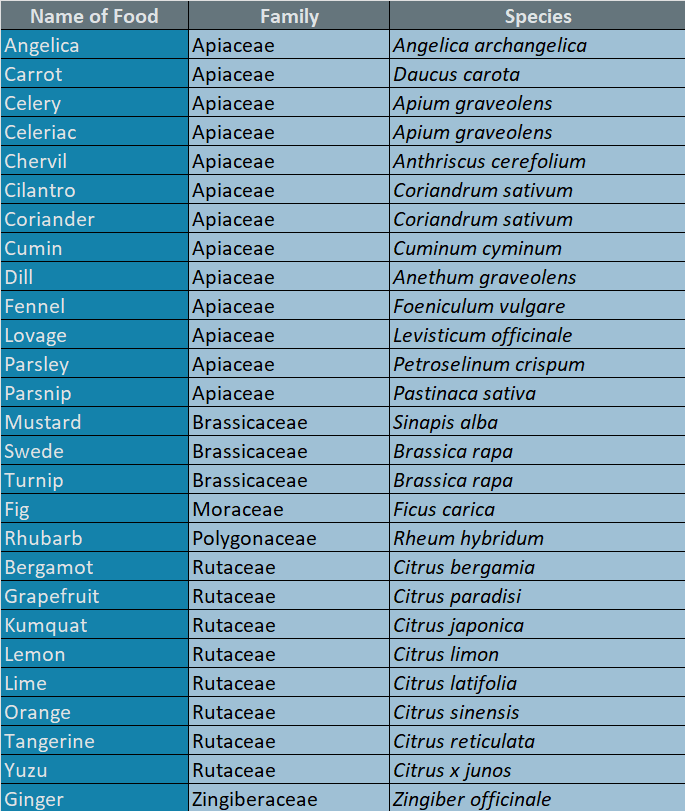
FURANOCOUMARIN ALLERGY
Key Allergens
Also called furocoumarins, these chemicals found in plants can get on the skin and in combination with ultraviolet light (sunlight) can cause a sunburn like rash. Furanocoumarins are found in higher concentrations in fresh herbs, spices and citrus fruits and are natural irritants which can cause allergic contact dermatitis.
This is more common in occupations where you are frequently coming into contact with these foods, like chefs, cooks, growers and pickers.
This is more common in occupations where you are frequently coming into contact with these foods, like chefs, cooks, growers and pickers.
Associated Syndromes
Furanocoumarins are associated with allergic contact dermatitis and phytophotodermatitis. Phytophotodermatitis means that when this chemical comes into contact with the skin and is then exposed to UV sunlight it causes burn like blisters on the skin.
Cross Reactivity
Lots of foods contain furanocoumarins, including citrus fruits, herbs and spices.

You can read more about furanocoumarins by downloading a herb and spice allergens chart from the Allergy Resources Ko-fi Shop for just $0.90 (£0.69 or €0.82).
You can find the most up to date information on the Cross Reactivity Tool.

You can read more about furanocoumarins by downloading a herb and spice allergens chart from the Allergy Resources Ko-fi Shop for just $0.90 (£0.69 or €0.82).
You can find the most up to date information on the Cross Reactivity Tool.
Resources
Websites
DermNet NZ - Phytophotodermatitis
DermNet NZ - Photocontact Dermatitis
Articles and Journals
Phytophotodermatitis Due to Fig Tree Sap Activated by Ultraviolet Light: A Case Report, 2024
Bergaptol, a Major Furocoumarin in Citrus: Pharmacological Properties and Toxicity, 2024
Updated review on Indian Ficus species, 2023
Plant Dermatitis: More Than Just Poison Ivy, 2021
Tomatine and Furocoumarins: Toxins in Commonly Consumed Plants, 2018
Opinion on Furocoumarins in cosmetic products, 2005
Let me know if you found any of these interesting or useful.
If you spot an article or research that you think is interesting you can message me or tag me on Facebook, Instagram or Twitter - links at the bottom of the page.